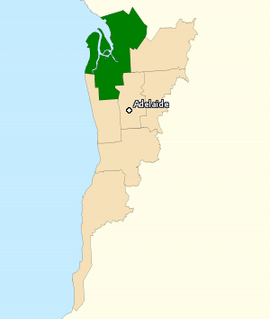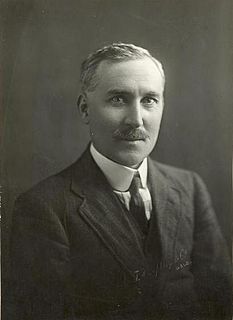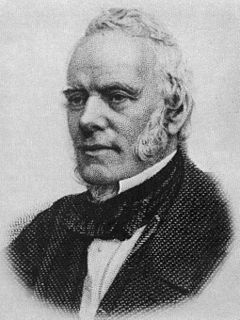The Liberal and Country League (LCL) was the major conservative party in South Australia from 1932 to 1974. In its 42-year existence, it spent 34 years in government, mainly due to an electoral malapportionment scheme known as the Playmander, introduced by the LCL government in 1936, which saw a change from multi-member to single-member seats in the lower house, a reduction of MPs from 46 to 39, and two-thirds of seats to be located in rural areas. This arrangement was retained even as Adelaide, the state capital, grew to two-thirds of the state's population. The most populous Adelaide-area seats had as much as 5–10 times the number of voters than the least populous rural seats − at the 1968 election the rural seat of Frome had 4,500 formal votes, while the metropolitan seat of Enfield had 42,000 formal votes. As a result, the Labor opposition won comprehensive majorities of the statewide two-party vote against the LCL whilst failing to form government on three occasions: 1944, 1953, 1962 and 1968. Additionally, with a decisive advantage to the LCL, swing voters may have been more likely to vote for the expected status quo LCL government.

The Division of Dobell is an Australian electoral division in the state of New South Wales. The division was created in 1984 and is named for Sir William Dobell, the painter.

The Division of Hindmarsh is an Australian Electoral Division in South Australia covering the western suburbs of Adelaide. The division was one of the seven established when the former Division of South Australia was split on 2 October 1903, and was first contested at the 1903 election, though on vastly different boundaries. The Division is named after Sir John Hindmarsh, who was Governor of South Australia from 1836 to 1838. The 78 km² seat extends from the coast in the west to South Road in the east, covering the suburbs of Ascot Park, Brooklyn Park, Edwardstown, Fulham, Glenelg, Grange, Henley Beach, Kidman Park, Kurralta Park, Morphettville, Plympton, Richmond, Semaphore Park, Torrensville, West Beach and West Lakes. The international Adelaide Airport is centrally located in the electorate making noise pollution a prominent local issue, besides the aged care needs of the relatively elderly population − the seat has one of the highest proportions of citizens over the age of 65 in Australia. Progressive boundary redistributions over many decades transformed Hindmarsh from a safe Labor seat in to a marginal seat often won by the government of the day.

Barossa Council is a local government area in the Barossa Valley in South Australia. The council area covers 912 square kilometres and had a population of over 23,000 as at the 2016 Census.

The Division of Sturt is an Australian electoral division in South Australia. It was proclaimed at the South Australian redistribution of 11 May 1949. Sturt was named for Captain Charles Sturt, nineteenth century explorer and the first European to discover the Murray River.
The Division of Angas was an Australian Electoral Division in South Australia. The division was created in 1949 and abolished in 1977. It was named for George Fife Angas, a South Australian pioneer.

The Division of Makin is an electoral division for the Australian House of Representatives located in the northeastern suburbs of Adelaide. The 130 km² seat covers an area from Little Para River and Gould Creek in the north-east to Grand Junction Road in the south and Port Wakefield Road in the west, including the suburbs of Banksia Park, Fairview Park, Golden Grove, Greenwith, Gulfview Heights, Ingle Farm, Mawson Lakes, Modbury, Para Hills, Para Vista, Pooraka, Redwood Park, Ridgehaven, Salisbury East, Salisbury Heights, St Agnes, Surrey Downs, Tea Tree Gully, Valley View, Vista, Walkley Heights, Wynn Vale, Yatala Vale, and parts of Gepps Cross and Hope Valley.

Julie Ann Owens is an Australian politician who has been an Australian Labor Party member of the Australian House of Representatives since October 2004, representing the Division of Parramatta, New South Wales.

The Division of Port Adelaide was an Australian electoral division in the state of South Australia. The 181 km² seat extended from St Kilda in the north to Grange Road and Findon in the south with part of Salisbury to the east. Suburbs included Alberton, Beverley, Birkenhead, Cheltenham, Findon, Kilkenny, Largs Bay, Mansfield Park, North Haven, Ottoway, Parafield Gardens, Paralowie, Pennington, Port Adelaide, Queenstown, Rosewater, Salisbury Downs, Semaphore, Woodville, West Croydon, and part of Seaton. The seat also included Torrens Island and Garden Island. Port Adelaide was abolished in 2019, after a redistribution triggered by a change in representation entitlement which saw South Australia's seats in the House of Representatives reduced to ten.

Adelaide city centre is the innermost locality of Greater Adelaide, the capital city of South Australia. It is known by locals simply as "The City" or "Town" to distinguish it from Greater Adelaide and from the City of Adelaide. The locality is split into two key geographical distinctions: the city "square mile", bordered by North, East, South and West Terraces; and the section of the parklands south of the River Torrens which separates the built up part of the city from the surrounding suburbs and North Adelaide.
Federal elections were held in Australia on 19 December 1931. All 75 seats in the House of Representatives and 18 of the 36 seats in the Senate were up for election.
The Emergency Committee of South Australia was the major anti-Labor grouping in South Australia at the 1931 federal election.

Bendigo West is an electoral district of the Legislative Assembly in the Australian state of Victoria. It is a 1,524 square kilometres (588 sq mi) electorate centred on the city of Bendigo west of the Yungera railway line, and including surrounding rural towns to the west and south-west. It encompasses the localities of Bendigo City, California Gully, Castlemaine, Harcourt, Long Gully, Maldon, Marong, Newstead and West Bendigo. It also includes parts of the Bendigo suburbs of Eaglehawk, Golden Square and Kangaroo Flat. It lies within the Northern Victoria Region of the upper house, the Legislative Council.

Joel Moses Gabb was an Australian politician. He was a member of the Australian House of Representatives from 1919 to 1934, representing the electorate of Angas. He represented the Australian Labor Party until resigning during the 1931 Labor split; however, he did not join the United Australia Party along with the other dissident MPs, and instead remained in parliament as an independent.
Walter Langdon Parsons was an Australian politician.
This article provides information on candidates who stood for the 1931 Australian federal election. The election was held on 19 December 1931.
This article provides information on candidates who stood for the 1934 Australian federal election. The election was held on 15 September 1934.
This is a list of electoral results for the Division of Angas in Australian federal elections from the division's creation in 1903 until its abolition in 1934.
Murray is a defunct electoral district that elected members to the House of Assembly, the lower house of the bicameral legislature of the Australian state of South Australia. The electorate, incorporating part of the River Murray, was rural in nature, with Mannum the only large town within its boundaries. From its establishment to the 1938 state election, Murray was a three-member electorate, but was made a single-member electorate afterwards, as part of a system of electoral malapportionment known as the "Playmander". In both incarnations it elected candidates from both major parties as marginal and safe seat holders at various times. If just 21 LCL votes were Labor votes in Murray at the 1968 election, Labor would have formed majority government. Murray was one of two gains in 1968 that put the LCL in office. The electorate was abolished prior to the 1985 election, with its territory now forming part of the districts of Hammond, Kavel, and Schubert. In total, 24 people represented Murray between 1902 and 1985, with its most notable member being Thomas Playford IV, who later served as Premier of South Australia.

The Australian Labor Party , commonly known as South Australian Labor, is the South Australian Branch of the Australian Labor Party, originally formed in 1891 as the United Labor Party of South Australia. It is one of two major parties in the bicameral Parliament of South Australia, the other being the Liberal Party of Australia.

















